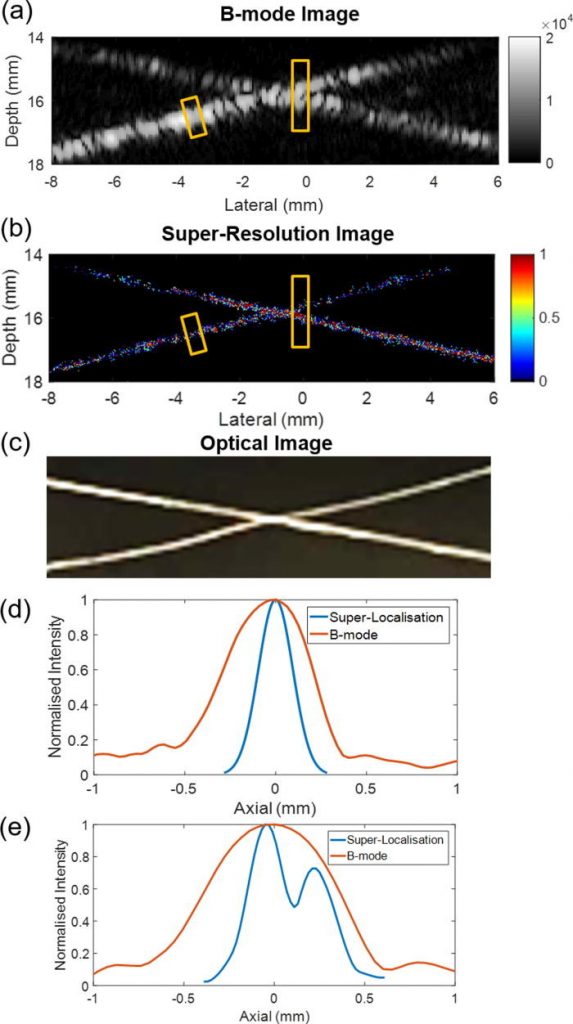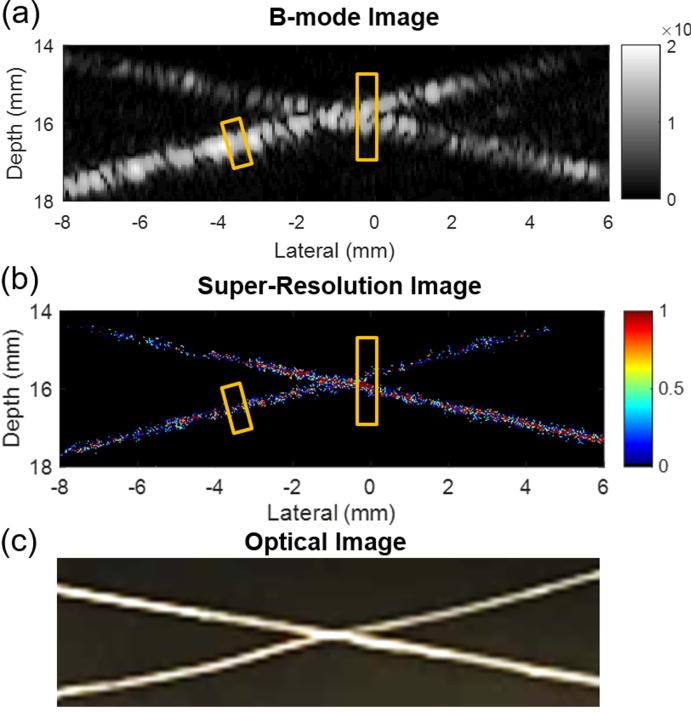Ge Zhang, Sevan Harput, Shengtao Lin, Kirsten Christensen-Jeffries, Chee Hau Leow, Jemma Brown, Christopher Dunsby, Robert J. Eckersley, and Meng-Xing Tang, “Acoustic wave sparsely activated localization microscopy (AWSALM): Super-resolution ultrasound imaging using acoustic activation and deactivation of nanodroplets“
Applied Physics Letters 113, 014101 (2018)
DOI: https://doi.org/10.1063/1.5029874
Affiliation
Ge Zhang, Sevan Harput, Shengtao Lin, Chee Hau Leow, and Meng-Xing Tang, are with the Ultrasound Laboratory for Imaging and Sensing Group, Department of Bioengineering, Imperial College London, London.
Kirsten Christensen-Jeffries, Jemma Brown, and Robert J. Eckersley, are with the Division of Imaging Sciences, Biomedical Engineering Department, King’s College London, London.
Christopher Dunsby, is with the Department of Physics and Centre for Pathology, Imperial College London, London.

Abstract:
Photo-activated localization microscopy (PALM) has revolutionized the field of fluorescence microscopy by breaking the diffraction limit in spatial resolution. In this study, “acoustic wave sparsely activated localization microscopy (AWSALM),” an acoustic counterpart of PALM, is developed to super-resolve structures which cannot be resolved by conventional B-mode imaging. AWSALM utilizes acoustic waves to sparsely and stochastically activate decafluorobutane nanodroplets by acoustic vaporization and to simultaneously deactivate the existing vaporized nanodroplets via acoustic destruction. In this method, activation, imaging, and deactivation are all performed using acoustic waves. Experimental results show that sub-wavelength micro-structures not resolvable by standard B-mode ultrasound images can be separated by AWSALM. This technique is flow independent and does not require a low concentration of contrast agents, as is required by current ultrasound super resolution techniques. Acoustic activation and deactivation can be controlled by adjusting the acoustic pressure, which
remains well within the FDA approved safety range. In conclusion, this study shows the promise of a flow and contrast agent concentration independent super-resolution ultrasound technique which has potential to be faster and go beyond vascular imaging
Supporting Bodies:
This research was partially funded by the UK EPSRC under Grant Nos. EP/N015487/1, EP/N014855/1, and EP/M011933/1, and the CRUK Multidisciplinary Project Award (No. C53470/A22353).
